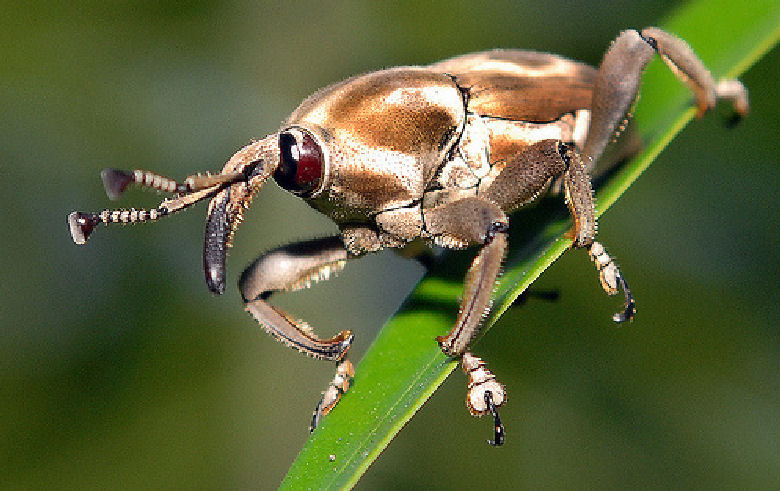136.WHAT IS A BOLL WEEVIL?
When the presence of the boll weevil within the United States was first discovered, cotton growers refused to believe that this little brown beetle could cause serious damage. The discovery was made about 1892, in southern Texas. About 30 years later, it was estimated that the boll weevil had decreased the annual cotton crop by more than 6,000,000 bales!
The boll weevil is a native of Central America. It worked northward through Mexico, and crossed the border into Texas at Brownsville. Like most insects, it has a keen sense of smell. Experiments have shown that the boll weevils which have just come forth in the final, or beetle stage of their development can head straight for a cotton field several miles away!
When fully grown, the beetle is about a quarter of an inch long. Its jaws are at the tip of a snout well arranged for boring holes in cotton buds. The beetle sleeps all winter under dry grass and leaves, or in cracks in the ground. In the spring, when the cotton buds are starting to form, it begins its destructive work.
The female insect bores into the buds and lays her eggs in them. Within three or four days, the eggs hatch, and the small grubs feed on the inside of the bud.
The young “squares,” as the flower buds are called, are the favorite breeding places; but when squares can no longer be found, the beetles attack the cotton bolls or fiber-filled pods. The worms remain inside the bolls during the period when they are changing Into beetles.
There are four or five generations of weevils during a season, so it is easy to understand what a large amount of damage they can cause. The infested buds usually drop off without maturing, and the cotton fibers of infested bolls are useless.



Leave a Reply